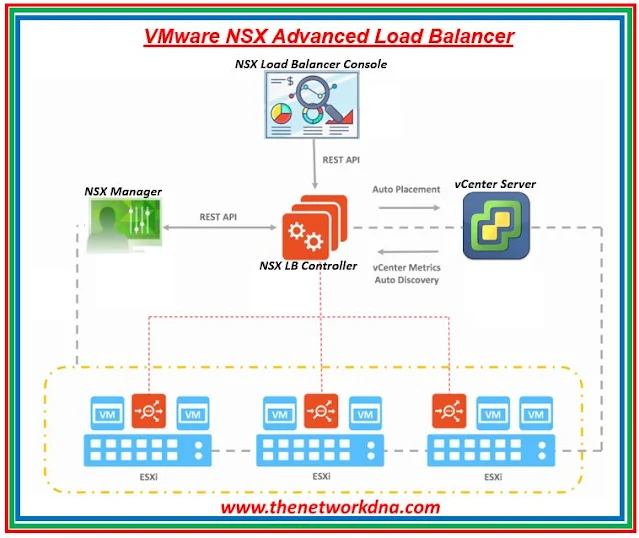VMware : NSX-T Load Balancer Vs AVI Load Balancer
VMware : NSX-T Load Balancer Vs AVI Load Balancer
This article is on the comparison and the difference between the VMware's NSX-T and NSX Advance ( AVI) load balancer.AVI Load Balancer ( NSX Advance Load Balancer)
The NSX Advanced Load Balancer is designed with a distributed, multi-cloud architecture that can be implemented on-premises, in public clouds, or in hybrid cloud scenarios.
It is the barrier that divides the central control plane (Avi Controller) from the distributed data plane (Avi Service Engines). Because the NSX Advanced Load Balancer is entirely REST API-based, it is completely automatable and integrates seamlessly with the CI/CD pipeline for application delivery.
 |
| Fig 1.1- AVI Load Balancer |
NSX Advanced Load Balancer can scale depending on elastic application loads across multi-cloud environments, including bare metal servers, virtual machines, and containers, thanks to predictive auto scaling.
The Avi Controller analyses this data and gives administrators with actionable insights via a contemporary web-based user interface that includes role-based access and analytics in a dashboard.
Application monitoring, end-to-end timing, "network DVR"-like record and review features, searchable traffic logs, security insights, log insights, and client insights are all part of Avi App Insights.
NSX-T Load Balancer
In the NSX-T Data Center logical load balancer, the network traffic load is distributed among multiple servers to provide high-availability services to applications. Multiple servers are utilized to balance incoming service requests.
Using load balancing, you can map a virtual IP address to a group of pool servers. On the virtual IP address, the load balancer accepts TCP, UDP, HTTP, or HTTPS requests and decides which pool server to use.
 |
| Fig 1.2- NSX-T Load Balancer |
NSX-T provides load balancing functionality, but it does so on Tier-1 gateway. Only T1 routers can support LB services, and each T1 gateway can support a single load balancer.
Comparison NSX-T Load Balancer Vs AVI Load Balancer
VMware's NSX-T Load Balancer and VMware AVI Load Balancer are both software-defined load balancing systems. While both solutions have comparable features, there are certain distinctions that may impact which solution is better suited for a specific setting.
The NSX-T Load Balancer architecture is built on a distributed data plane with numerous virtual machines that collaborate to offer load balancing capabilities. AVI Load Balancer, on the other hand, offers a distributed design built on a controller plane and data plane that can be deployed in a variety of settings, including virtual machines and containers.
NSX-T Load Balancer is intended to be used in conjunction with the NSX-T Data Center platform, whereas AVI Load Balancer is a stand-alone solution that can be used on a variety of platforms, including NSX-T Data Center, vSphere, and public cloud settings.
Both solutions have features in common, such as powerful load balancing algorithms, application security, analytics, and automation. AVI Load Balancer, on the other hand, has native interaction with Kubernetes, sophisticated SSL/TLS termination, and increased analytics and monitoring capabilities.
 |
| Fig 1.3- NSX-T Vs AVI Load Balancer |
Continue Reading...
++++++++++++++++++++++++++++++++++++++++++++++++++++
VMware towards NGN : NSX-V and NSX-T differences - The Network DNA
Functional components of VMWare NSX - The Network DNA
NSX-T Load balancer Deployment Topology - The Network DNA
Basics about VMware NSX - The Network DNA
VMware NSX-T Data, Control & Management Plane - The Network DNA
Gateway Firewall in VMware NSX-T - The Network DNA
++++++++++++++++++++++++++++++++++++++++++++++++++++







